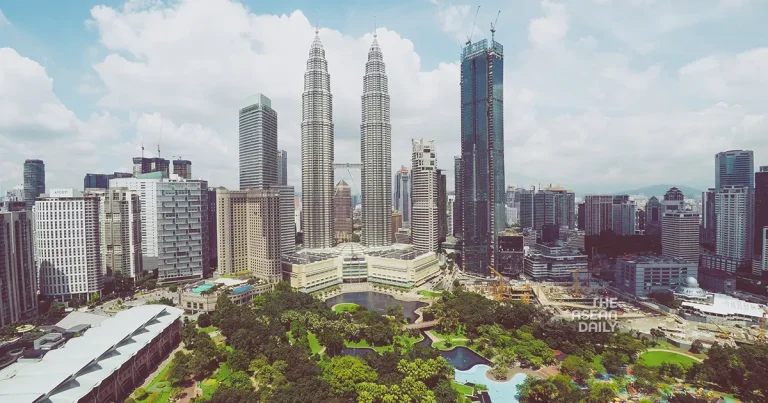24-12-2023 (KUALA LUMPUR) In the bustling heart of Asia, Kuala Lumpur stands as a testament to the rapid metamorphoses that define the region’s megacities. A recent visit to the Malaysian capital in late October revealed a cityscape dramatically transformed since my last encounter nine years ago. Urban rail lines now intricately weave through the city, accompanied by the emergence of new shopping havens. A particularly striking addition is the completion of Merdeka 118, a 118-story skyscraper, proudly asserting itself as the world’s second-tallest structure after Dubai’s Burj Khalifa. This architectural marvel symbolizes Malaysia’s ascending affluence, with its spire crafted to echo the iconic image of Tunku Abdul Rahman, the nation’s inaugural prime minister, raising his hand in the proclamation of independence in 1957.
The nation has undergone a whirlwind of political changes in recent years, culminating in Prime Minister Anwar Ibrahim’s government, which, after a year in power, underscores a commitment to propelling faster economic growth. In an interview last December, Prime Minister Anwar emphasized the need to shift the focus towards economic development, unveiling ambitious initiatives such as the 10-year Madani Economy plan, the National Energy Transition Roadmap, and the Hydrogen Economy and Technology Roadmap.
While these initiatives may appear disparate to some observers, the overarching objective is unmistakable – achieving an annual growth rate exceeding 5.5%, as outlined in the Madani plan. Malaysia’s GDP witnessed an impressive 8.7% growth last year, marking the highest in over two decades. Even in the face of global economic headwinds, the nation anticipates a 4% growth rate this year, fueled by a burgeoning young population and increased foreign direct investment in sectors like semiconductors amid escalating U.S.-China tensions.
With a per capita gross national income of $11,780 in 2022, Malaysia stands at the cusp of shedding its middle-income status, defined by the World Bank, within the next two or three years. The journey to high-income status has been a protracted one, encapsulated by the notion of the middle-income trap, a term woven into the fabric of Malaysia’s economic narrative.
The genesis of this trap can be traced back to a turbulent period in the nation’s history, precisely twelve years after gaining independence in 1957. A racial riot erupted in Kuala Lumpur, a manifestation of the economic imbalance where ethnic Chinese, constituting less than 30% of the population, held sway over the economy, triggering unrest among the majority Malays. In response, the government introduced the Bumiputera policy in 1971, an affirmative action initiative favoring Malays in education, employment, and even stockholding. While criticized for inefficiencies, this policy aimed at striking a delicate balance between distribution and growth.
Mahathir Mohamad, Malaysia’s fourth prime minister from 1981, played a pivotal role in steering the nation’s focus towards growth through the Look East policy, emulating Japan’s economic success. Vision 2020, launched in 1991, set an audacious goal of transforming Malaysia into a high-income country within 30 years. The subsequent Asian financial crisis in 1997 posed a significant setback, leading to a slowdown in growth to 5% to 6%. Anwar Ibrahim, then deputy prime minister and finance minister, clashed with Mahathir over crisis management, resulting in his dismissal.
Fast forward to the present, Prime Minister Anwar identifies the Madani plan as the catalyst to break free from the shackles of the middle-income trap, a feat eluding his predecessors. To understand Malaysia’s struggle, a comparative analysis with the economic trajectories of Taiwan and South Korea proves enlightening. Despite similar populations in the early 1980s, Malaysia’s per capita GDP lagged behind both countries. Taiwan and South Korea’s rapid ascent from upper-middle-income to high-income status within seven years underscored their ability to avoid the middle-income trap.
Several factors contributed to their success. Unlike Malaysia, Taiwan and South Korea navigated their paths without complex ethnic issues, swiftly embraced industrialization due to a lack of abundant natural resources, and democratized at a crucial juncture, riding the waves of globalization and information technology. Malaysia’s slower progress stems from a less dynamic economic landscape, marked by a lack of internationally competitive businesses and a reliance on government-affiliated entities in crucial industries.
Noteworthy is Malaysia’s resilience in avoiding the resource trap, a phenomenon hindering countries overly dependent on natural resources. While Malaysia stands apart from elite East Asian economies and unique states like Singapore and oil-producing Gulf nations, achieving high-income status remains a watershed moment for the nation.
Challenges, however, loom on the horizon. The rise of Vietnam and India in chip manufacturing poses a threat, necessitating increased investments in higher value-added industries. Moreover, the global shift towards carbon neutrality forewarns a decline in demand for Malaysia’s fossil fuels. Yet, the nation, with its multiethnic composition and an average age of 30, maneuvers the delicate balance between growth and stability, steadily advancing in its quest to overcome the middle-income trap.




